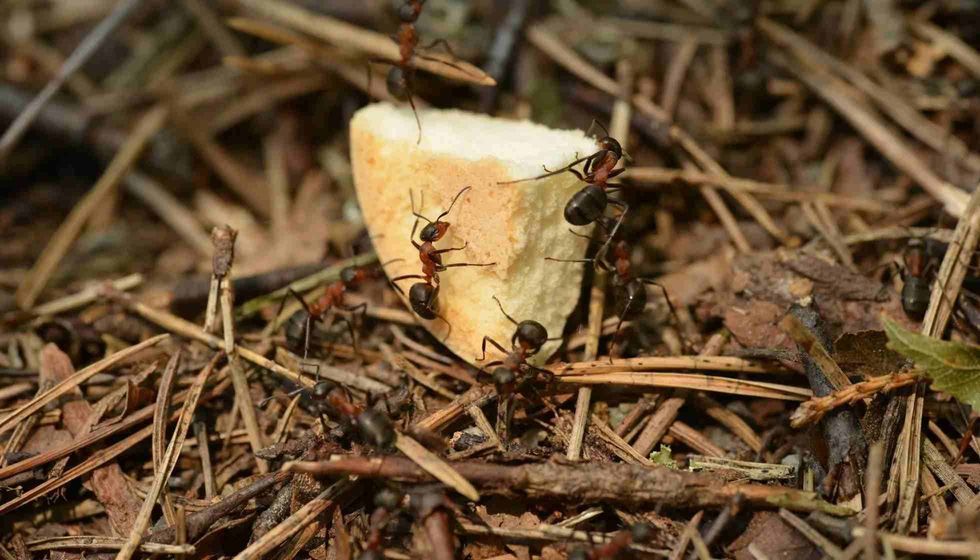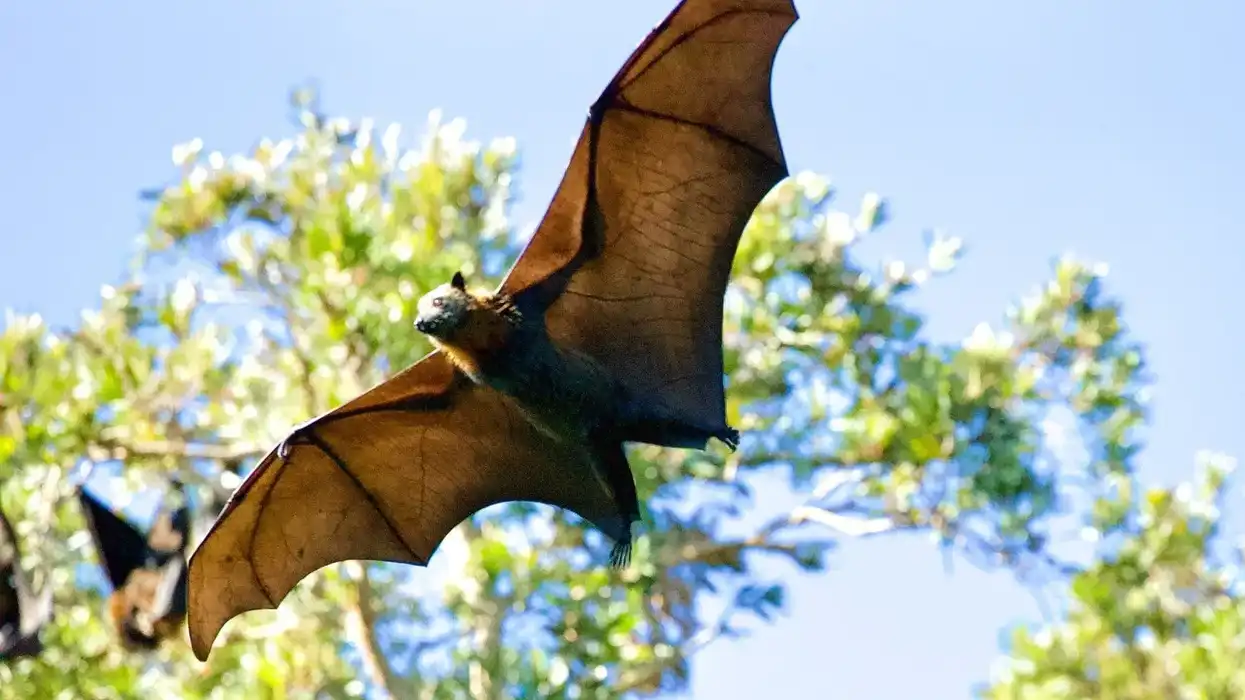Carpenter ants are named so because they chew on wood to make their nests. Their infestation can cause structural damage to the wood used in homes and furniture.
Carpenter ants do not eat wood like termites, instead, they chew them to create tunnels for creating their nests in it. They are also different from termites in the way that carpenter ants produce sawdust after chewing on wood while termites produce pellets.
When mature, black carpenter ants' colony consists of 10,000-20,000 workers, and some big colonies or nests may even consist of 50,000 workers. These colonies, tunnels, and nests usually consist of only one wingless, functional queen per colony.
When the colony is at least two years old or has gained the maximum population, the carpenter ants start becoming swarmers who are winged ants. The objective of these swarmers is to build new colonies and mate.
If you want to learn more about these interesting tiny creatures, read on. If you enjoy reading these facts about carpenter ants, you may also want to consider reading about the millipede and click beetle.
Carpenter Ant Interesting Facts
What type of animal is a Carpenter Ant?
Carpenter ants are large ants who build nests and tunnels in the house woods or woods which have been wet.
What class of animal does a Carpenter Ant belong to?
Like all other ants, carpenter ants belong to the class Insecta.
How many Carpenter Ants are there in the world?
There is no estimation about the number of carpenter ants in the world but they can reach a population of over 30,000 or more within three to six years of colonization.
Where does a Carpenter Ant live?
Carpenter ants are abundantly found in the Eastern and Central United States and Eastern Canada.
What is a Carpenter Ant's habitat?
Wooded areas with trees, tree logs, and stumps are filled with carpenter ants and it's very common to find carpenter ants in areas with moisture.
Apart from these areas, carpenter ants can also be found in several man-made structures made out of wood like wooden doors, attics, under bathtubs, floor joists, and ceiling beams.
If in your house, you see damaged wood or shavings of wood, the infestation of carpenter ants is to be blamed and it is best to get rid of carpenter ants by calling pest control services to avoid any damage to the structure of your house.
Who does a Carpenter Ant live with?
Carpenter ants live in colonies with other ants of their kind. The colony consists of swarmers, workers, and a single queen.
How long does a Carpenter Ant live?
The female worker carpenter ants can live up to seven years and the males die soon after mating, the males only live for a few weeks to a few months. The queen however can live up to 10 years.
How do they reproduce?
Mating with wood carpenter ants is done with vigor once they establish their nests. Males release pheromones which compel the winged female ants to take flight and find mates.
This nuptial flight usually takes place in the summer season, mostly in July. These annual swarms of mating are only attended by a few females and after mating these limited females go ahead and form their colonies with their fertilized eggs.
The female ant then finds a hole or knot in the tree and lays her eggs there. Until the eggs hatch, metamorphize, and become her workers, the female tends to them.
The workers then help in expanding the nest and look after the next batch of eggs.
Eggs that produce sexually mature females and males are produced only several years later, once the parent colony has been established. The female ants have bimodal oviposition.
This means that eggs that are laid in spring only produce workers, while the eggs laid in August and September produce sexual forms of ants. The first batch of eggs laid by the female carpenter ants is only 5-15 eggs which increase the next time she lays eggs in the nests.
The queen stores the sperm from her first mating and keeps laying eggs throughout her lifetime by using those sperm. It is interesting to note that it is only unfertilized eggs that become males are fertile, while the fertilized eggs become female workers.
What is their conservation status?
The conservation status of carpenter ants is Not Listed.
Carpenter Ant Fun Facts
What do Carpenter Ants look like?
The most common color of carpenter ants is black. They can also be of reddish or yellowish color. The color of the ants varies from species to species.
They can be jet-black, black, light brown, dark brown, yellow, yellowish tan, orange, or red. Worker carpenter ants are wingless and have mandibles used for biting, cutting, or holding food. The males and sexual females have wings that females lose once they become queens.
How cute are they?
Carpenter ants are not at all cute and it is advisable if you get rid of carpenter ants as soon as you spot an infestation. You should immediately call pest control services and carpenter ant traps and control services if you see one and should never try to pet it.
How do they communicate?
The antennae of the ants are its main communication medium. The antennae are used for environmental perception, chemical detection, communication, and olfaction. Chemical detection is the main communication method for them.
How big is a Carpenter Ant?
The ants are approximately 0.13-0.5 in (3.4-13 mm) long. The queen can be as big as 0.74 in (19 mm). It is the largest and found in the United States and is much larger than other ants.
How fast can a Carpenter Ant move?
The speed of these ants is not known, but the speed at which they will destroy your furniture is pretty fast.
How much does a Carpenter Ant weigh?
The weight of carpenter ants is negligible.
What are the male and female names of the species?
The male and female name of the species is the same for both black carpenter ants and brown-black carpenter ants. For black carpenter ants, it is C. pennsylvanicus, and for brown-black carpenter ants is C. ligniperda.
What would you call a baby Carpenter Ant?
The young ones of carpenter ants are called names according to the stage they are in their life cycle i.e. eggs, larvae, and pupae.
What do they eat?
Carpenter ants, although they live in nests in the wood by chewing it, do not eat the wood in which they build nests. They eat insects and pests that they can find.
Its main food is the aphids, whom they also farm for the honeydew that aphids produce. They will eat any kind of forest pest they can find as their food. Apart from insects and pests, plant nectar, fruit, and various fungi are also their food.
They also eat sugar, jelly, syrup, and honey. Accumulation of dead ants has also been found in their nest, which implies that they can eat dead ants too.
Are they poisonous?
No, carpenter ants are not poisonous or dangerous to humans, but carpenter ants' bite can sting a lot and cause pain. The bite looks like a pea-sized red blemish and is not harmful.
Would they make a good pet?
Carpenter ants would not make a good pet as their infestation will pretty much destroy everything made out of wood in your house. If one views an ant or swarmer, one should assume that there is a nest nearby and should call pest control services immediately.
Did you know...
The male carpenter ants have only half the number of chromosomes as females.
Carpenter ants are strong and can carry 10-50 times their body weight.
The carpenter ant nest is of two types- parent colonies and satellite colonies. The parent colony consists of the queen, her brood, and the worker ants whereas the satellite colonies consist of older larvae, pupae, and workers.
The satellite nests or satellite colonies are only built if there is a shortage of space in the parent colony. Satellite nests can also be built if a suitable source of food and water supply is found.
The sawdust produced by carpenter ants while chewing on dry wood is known as 'frass' by insect experts.
Carpenter Ants need moisture and a constant source of water to survive.
Carpenter ants workers clean their wood galleries and nesting sites and no mud or soil with moisture can be found in the galleries like in termite galleries. Their galleries are known to be as clean and smooth as sandpapered wood.
What do Carpenter Ants do to your house?
In your home, the infestation of carpenter ant damage the wooden furniture and doors, especially one with moisture, and make them hollow from the inside and leaves behind only wood shavings.
Their infestation will damage everything made out of wood and cause structural damage to your home, you should call ant control services or pest control to get rid of them.
You can also use home carpenter ant traps which come by the names of 'carpenter ant bait' or 'carpenter ant killer' in the market.
How to identify a Carpenter Ant
Of all the kinds of ants, home carpenter ants, being the biggest in the US, can be easily identified by big size, their black or blackish color, and evenly rounded node and thorax. You can easily find a carpenter's ant nest by looking around your house.
If you have a damaged wood or hollow wood which was destroyed because of moisture and wood shavings are found near it, it's best to call carpenter ant control or pest control services to avoid structural damage.
Here at Kidadl, we have carefully created lots of interesting family-friendly animal facts for everyone to discover! Learn more about some other arthropods, from our mayfly facts and house centipede fun facts.
You can even occupy yourself at home by coloring in one of our free printable carpenter ant coloring pages.










